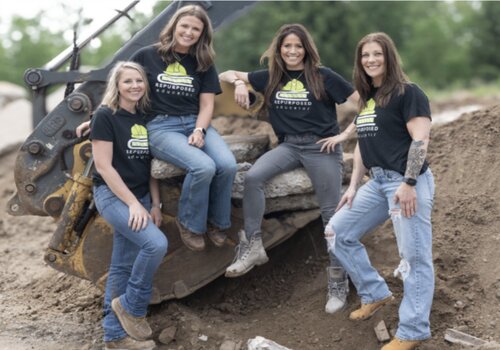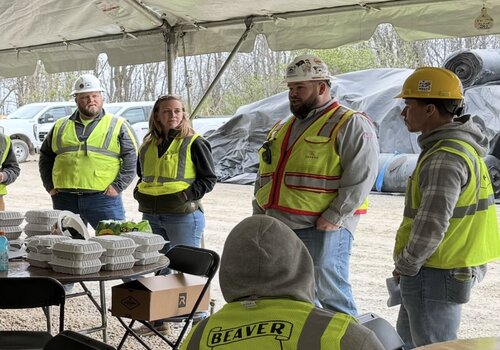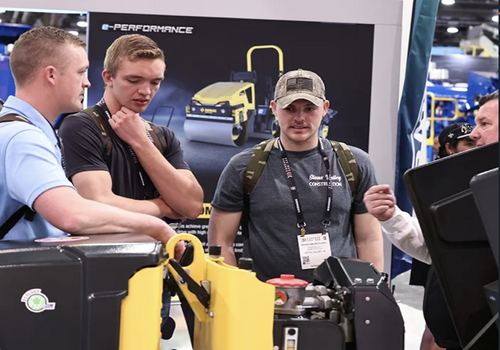The first step in conducting an effective meeting is to create and distribute the agenda in advance, says Brad O'Neill of Dick Anderson Construction based in Helena, Montana. O’Neill was a field superintendent for 18 years before he became the company’s education specialist teaching in-house apprenticeship classes, assisting in recruitment, and helping to develop and deliver trainings.
HAVE A CLEAR AGENDA
“Within meeting agendas, I make sure to define focused topics clearly and highlight any significant questions I may have for specific participants,” O'Neill says. “This approach sets an organized tone and gives others the chance to prepare for critical questions, ensuring that no one is caught off guard and can provide the necessary answers to resolve issues.”
During the meeting, O'Neill maintains control over the tempo, topics and duration. He doesn’t allow interruptions or side conversations, and he communicates these boundaries at the beginning of the meeting, though there’s always an opportunity for participants to voice any concerns they may have.
O'Neill always start the meeting on time and sticks to the agenda as closely as possible. He will use his judgment to determine if new topics or concerns should be addressed immediately or if a follow-up meeting is necessary.
“As the facilitator, I aim not to dominate the conversation,” O'Neill says. “Most of my contributions involve seeking the answers I need, often by asking ‘why’ until I reach the root cause of an issue.”
To foster accountability, O'Neill encourages realistic commitments. He will ask participants what they can contribute, and he may push a little harder if he believes they can do more. He makes sure that they make verbal commitments to the group, promoting cooperation and coordination between trades.
“I strive to be a liaison to alleviate conflicts,” O'Neill says. “If there are individuals who don’t enjoy working together, I encourage conversations that promote a cooperative tone.”
Throughout the meeting, he will take detailed notes, define action items and clarify accountability.
“I distribute the minutes immediately afterward because I believe the most critical part of any meeting is the follow-up,” O'Neill says. “Otherwise, meetings can feel like mere formalities, just checking a box. If there’s no follow-up on action items and respectful accountability in subsequent meetings, then the meeting may not have been necessary.”
Contractors can have ambitious meetings and well-laid plans, but then an unforeseen issue, like bad weather or a design conflict, can quickly derail those plans, he says.
“As a leader, my response to adversity is crucial -- everyone is watching how I handle it,” O'Neill says. “It’s important to understand that when a subcontractor faces a supplier issue that’s out of their control, it’s not the time to place blame.”
If they have completed all their submittals on time and are still waiting for materials that are hindering progress, O'Neill then just asks what they need to keep things on track.
“Promoting this team-oriented atmosphere is essential for overcoming obstacles because one person cannot, and should not, carry the burden alone,” he says.
KEEP IT INTERESTING
In addition to having a clear agenda, meeting leaders should “keep it conversational,” in a way that's going to capture people's interest, says Brian Turmail, vice president of public affairs and strategic initiatives for the Associated General Contractors of America.
You don't want to be the only one speaking -- you might want to have a couple people identified who are going to contribute and you also want to get other people's ideas,” Turmail says. “The whole point of stopping work to talk isn't to be heard, but it is to have a conversation, so you want stimulate that kind of conversation.”
As leaders think about their meeting agenda, they should make sure not to just ask open-ended questions, he says. Rather, have some specific things in mind that they want to “kick around” with the participants.
“People should know about any of your concerns ahead of the meeting, to give them time to propose their own solutions to the problem,” Turmail says.
“Blindsliding people in public meetings just puts them in their corners and turns something that could be a productive meeting into a defensive meeting.”
SET CLEAR EXPECTATIONS
When leaders are dealing with multiple partners on a project, they can't over communicate – and they also need to set clear expectations about who is responsible for what, he says. On some of AGC’s award-winning projects, for example, leaders spend a lot of time on the front-end building trust, opening lines of communication between everyone before the work even begins. Indeed, one AGC member will hold an offsite retreat with essentially the entire project team.
“You spend two or three years building a great working relationship, and then you work on a different project and you've got a whole new set of people that you've got to learn their rhythms,” Turmail says. “So the contractors that put a lot of time at the front end building those relationships tend to have less problems when issues do arise on the project.”
Even with best intentions and preparation, various obstacles can pop up along the way that may undermine the effectiveness of meetings and hinder project momentum, says Patrick Scarpati, ABC director of construction technology and innovation for the Associated Builders and Contractors.
“Examples include stakeholders at the meeting who are not decision-makers or not involved in relevant tasks,” Scarpati says. “Be sure to include those who are essential to the topics on the agenda, such as the superintendent, leads, other contractors and owners reps.”
On the other hand, the right people are at the meeting but they are not prepared appropriately, he says. Be sure all stakeholders have received proper preparation instructions in advance. Another common obstacle are when stakeholders are hesitant to speak up. To minimize this, contractors should make sure they are fostering a culture of open communication, “where everyone’s input is welcomed.”
BEST PRACTICES
Scarpati recommends these additional best practices to keep projects on track:
- Keep health and safety and quality top of mind; rework can derail progress quickly.
- Build strong relationships with your team—respect and collaboration are key to running a productive, motivated jobsite.
- Address issues as soon as they arise to prevent small problems from growing.
- Always walk the site to verify work is progressing as planned.
- Communicate clearly and consistently with all stakeholders, especially trade partners, to prevent misunderstandings.
Photo credit: SHUTTERSTOCK.COM/GROUND PICTURE












